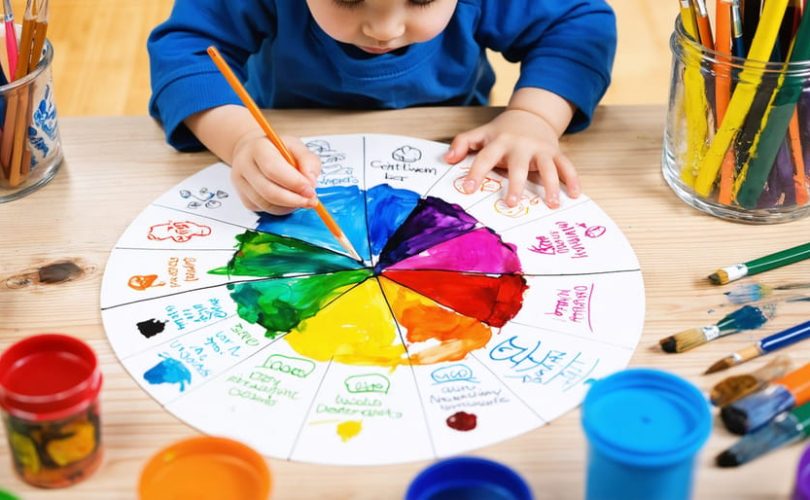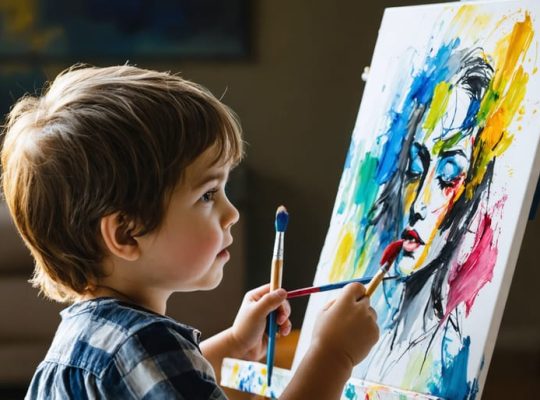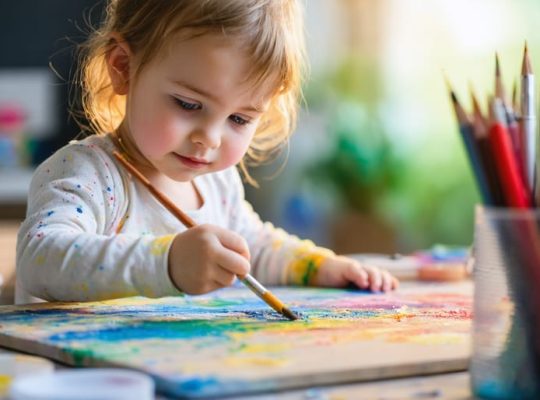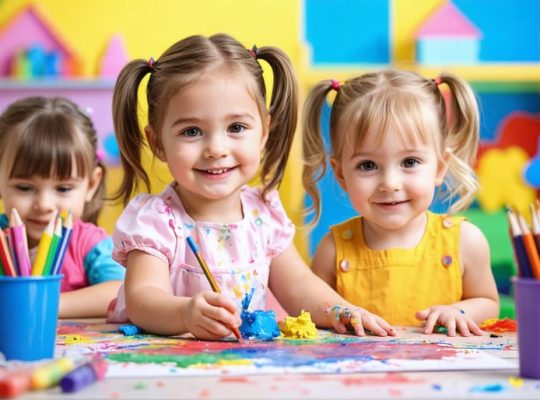Visual coping skills transform abstract emotional concepts into tangible tools that children can understand and use. When a child feels overwhelmed, pointing to a feelings chart or drawing their emotions creates an immediate bridge between their internal experience and external expression. These visual strategies work because they tap into children’s natural ability to process information through images rather than words.
Parents and educators witness remarkable transformations when implementing visual coping tools. A simple emotion wheel can help a frustrated kindergartener identify and communicate their feelings, while a personalized calm-down corner with visual prompts empowers elementary students to self-regulate. These visual supports serve as constant, reliable anchors during emotional storms.
Research shows that children who use visual coping strategies develop stronger emotional intelligence and better stress management skills. Whether it’s breathing cards, stress thermometers, or emotion-focused art activities, these visual tools provide children with concrete ways to understand and manage their feelings. By making abstract concepts visible and accessible, we give children the power to become active participants in their emotional well-being.
Let’s explore how to create and implement these powerful visual supports in ways that resonate with children of all ages and abilities.
Why Visual Coping Skills Matter for Children
The Brain-Art Connection
When children engage in artistic activities, something remarkable happens in their brains. Research shows that art therapy for emotional processing activates multiple areas of the brain simultaneously, creating new neural pathways that help manage stress and emotions.
Drawing, coloring, or crafting triggers the release of dopamine, our body’s natural feel-good chemical, while reducing cortisol levels – the stress hormone. This combination creates a calming effect that helps children regulate their emotions more effectively.
Dr. Sarah Chen, a child psychologist, explains: “When children create art, they’re not just making pretty pictures. They’re actually giving their emotions a physical form, which makes these feelings easier to understand and process.”
The repetitive motions involved in artistic activities, like coloring or molding clay, can create a meditative state that helps children focus and center themselves. This natural flow state provides a safe space for emotional expression while building crucial coping skills that last well into adulthood.
For many children who struggle to express themselves verbally, art becomes their voice, allowing them to communicate complex emotions in ways words simply cannot capture.
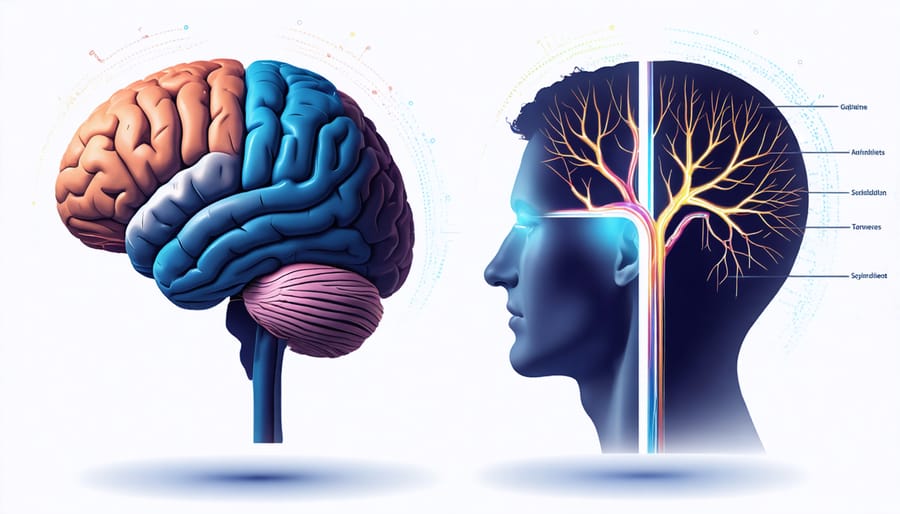
Benefits of Visual Expression
Visual tools for emotional coping offer powerful benefits that extend beyond traditional verbal communication methods. When children engage in creative activities for emotional expression, they often find it easier to communicate feelings they struggle to put into words.
Drawing, coloring, or creating visual representations of emotions helps children develop a deeper understanding of their feelings while providing a safe outlet for processing complex experiences. This form of expression can be particularly valuable for younger children who may not yet have the vocabulary to articulate their emotions effectively.
Visual coping tools also create lasting reference points that children can return to when feeling overwhelmed. A personalized “calm down chart” or “feelings wheel” becomes a familiar friend during challenging moments, offering comfort and guidance when needed. These visual aids help build emotional literacy and self-awareness, essential skills for long-term mental health.
Additionally, the process of creating visual representations can be calming in itself, activating the brain’s natural stress-reduction mechanisms through focused, mindful activity. This makes visual expression both a preventive tool and an active coping strategy.
Essential Visual Coping Tools for Different Ages
Preschool Visual Tools (Ages 3-5)
For preschoolers, visual tools can be powerful aids in helping them express big feelings through art and develop essential coping skills. Simple drawing activities, like the “Color Your Feelings” exercise, encourage children to associate emotions with colors and shapes. For instance, they might draw angry feelings as red zigzags or happy feelings as yellow circles.
Emotion charts designed for this age group typically feature basic facial expressions with clear, bold lines and bright colors. Consider creating a “Today I Feel” chart with removable emotion faces that children can point to or move around. This interactive approach helps them identify and communicate their feelings more effectively.
Another effective tool is the “Calm Down Corner Poster,” which uses simple pictures to show calming activities like deep breathing (illustrated with balloon inflation), counting to five (shown with numbered fingers), or hugging a stuffed animal. These visual reminders help preschoolers remember and choose appropriate coping strategies when they’re upset.
Parents and teachers can also create “Story Cards” showing common challenging situations (like sharing toys or saying goodbye) paired with positive coping responses. These visual narratives help children understand and practice healthy emotional responses in a way that’s engaging and age-appropriate.

Elementary Age Tools (Ages 6-11)
Elementary-aged children can benefit from more sophisticated visual tools that align with their developing cognitive and emotional abilities. At this age, children can engage in detailed emotion mapping projects, such as creating personal “mood meters” using different colors, shapes, and intensity levels to represent their feelings.
A popular activity is the “Emotion Weather Report,” where children draw their daily emotional state as weather patterns. For instance, anger might be depicted as thunderstorms, while happiness could be represented by sunshine. This helps children understand that emotions, like weather, are temporary and changeable.
Creating “Coping Skills Toolboxes” becomes more interactive at this age. Children can design and decorate actual boxes filled with personalized comfort items, stress toys, and visual reminders of their favorite calming strategies. They can also draw or paint their own set of coping cards, featuring activities that help them feel better when upset.
Another effective tool is the “Body Feelings Map,” where children color different body parts to show where they experience various emotions. This activity helps them recognize physical sensations associated with emotions, like butterflies in the stomach for anxiety or a warm chest for happiness.
Encourage children to maintain “Emotion Journals” with a combination of writing and drawing. These journals can include mood trackers, gratitude pages, and spaces for both artistic expression and written reflection, supporting their growing emotional awareness and communication skills.
Preteen Approaches (Ages 12+)
As preteens develop more complex emotional awareness, their coping skills visuals can evolve into sophisticated forms of expression. Visual journaling offers an excellent outlet, combining artistic elements with written reflection. Encourage them to create mood boards using magazine cutouts, photographs, and personal artwork that represent their emotional experiences and aspirations.
Art therapy techniques like mandala drawing can help preteens focus and find inner calm during stressful moments. They might also benefit from creating emotion wheels that include nuanced feelings beyond basic emotions, helping them better articulate their emotional states. These can be personalized with colors, symbols, and words that resonate with their experiences.
Digital tools can also play a role – many preteens enjoy using graphic design apps or digital art platforms to create their coping skills visuals. This might include designing positive affirmation wallpapers for their devices or creating digital mood trackers.
Consider introducing mind mapping techniques where they can visually connect thoughts, feelings, and potential solutions to challenges they face. These maps can incorporate both images and text, serving as a personal roadmap for managing difficult situations.
Remember to respect their privacy and creative choices – preteens often prefer to process emotions independently. Offer guidance when requested, but allow them the autonomy to develop their own visual language for emotional expression.
Implementing Visual Coping Skills at Home
Setting Up Your Art Space
Creating a welcoming and organized art space is essential for helping children express their emotions through visual coping skills. Start by choosing a quiet corner or dedicated area where children can feel safe and undisturbed. This space should have good lighting, preferably natural light, and be easily accessible to encourage regular use.
Keep art supplies at child-height and clearly organized in labeled containers. Essential materials might include colored paper, markers, crayons, colored pencils, safety scissors, and non-toxic glue. For younger children, consider using washable materials and protecting surfaces with newspaper or a plastic tablecloth.
Consider emotional comfort when setting up the space. Add soft cushions or a comfortable chair, and display positive affirmations or calming images on nearby walls. Some children work better with background music, so having a small speaker available might be helpful.
Storage solutions should make cleanup easy and manageable. Use clear containers so children can see what’s inside, and implement a simple organization system that children can maintain independently. This teaches responsibility while ensuring materials remain in good condition.
Remember to create a display area for finished artwork. This can be a bulletin board, string with clips, or a dedicated wall space. Seeing their work displayed helps build confidence and provides visual reminders of their coping strategies.
The space should feel inviting but not overwhelming. Too many options can be counterproductive, so start with basic supplies and gradually add more as children become comfortable with the materials and process.
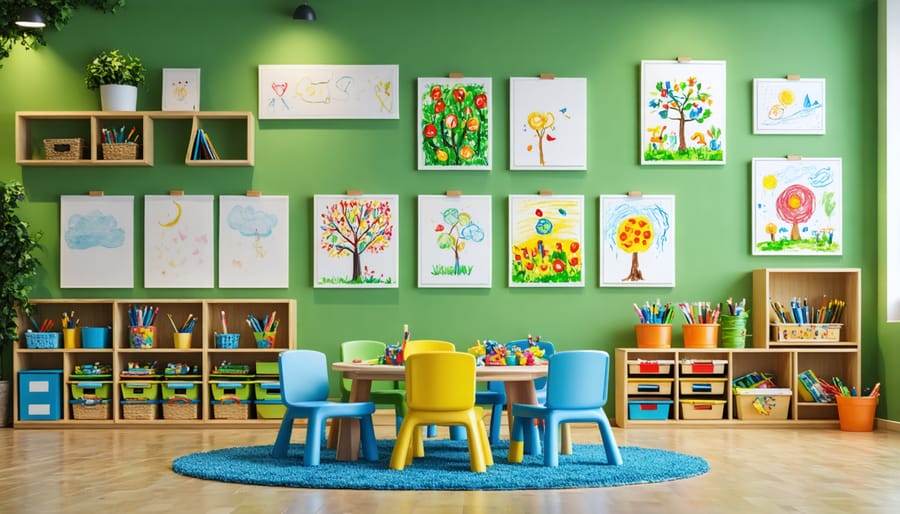
Supporting Your Child’s Journey
Supporting your child’s emotional expression through art requires patience, understanding, and consistent creative emotional support. Start by creating a safe, judgment-free space where your child feels comfortable expressing their feelings through drawing, painting, or other artistic mediums.
When your child shares their artwork, resist the urge to interpret or judge it. Instead, ask open-ended questions like “Can you tell me about your drawing?” or “What feelings were you having when you made this?” This approach validates their emotional expression while encouraging self-reflection.
Remember that every child processes emotions differently. Some might prefer bold colors to express anger, while others might use gentle strokes to show calm. Celebrate these individual differences and avoid comparing their work to others’.
Keep art supplies readily available and establish regular creative time in your daily routine. This consistency helps children understand that expressing emotions through art is a normal, healthy practice. When challenging moments arise, gently remind them that they can use their art tools to work through their feelings.
Most importantly, participate alongside your child when possible. Creating art together not only strengthens your bond but also demonstrates that emotional expression through creativity is valuable at any age. Your involvement shows that you take their feelings seriously and support their journey toward emotional awareness.
As we’ve explored throughout this article, visual coping tools can be transformative in helping children develop emotional awareness and regulation skills. By implementing these visual strategies, you’re providing your child with concrete, accessible ways to understand and express their feelings, ultimately building their emotional resilience for life.
Remember that success with visual coping tools comes from consistency and patience. Start small by introducing one or two tools that resonate most with your child’s interests and needs. Whether it’s emotion charts, calming cards, or breathing visuals, choose tools that feel natural and engaging for your family.
Don’t be discouraged if certain visuals don’t work immediately. Every child is unique, and finding the right combination of tools may take time and experimentation. Pay attention to what captures your child’s interest and builds their confidence in managing emotions.
Creating a supportive environment where these visual tools are readily available and regularly used is key. Consider displaying emotion charts at eye level, keeping calm-down cards in an easily accessible spot, or creating a dedicated calm corner with visual prompts for different coping strategies.
We encourage you to begin implementing these tools today. Start by choosing one visual strategy from those we’ve discussed and introduce it during a calm moment. Make it fun and collaborative – perhaps work with your child to create their own personalized emotion faces or design a unique feelings thermometer.
The journey of emotional development is ongoing, and by incorporating visual coping tools, you’re giving your child valuable resources they can use throughout their life. Remember that you’re not alone in this process – many parents and caregivers have found success with these strategies, and professional support is always available if needed.
Take that first step today. Your commitment to supporting your child’s emotional growth through visual coping tools is an invaluable investment in their future well-being and success.

